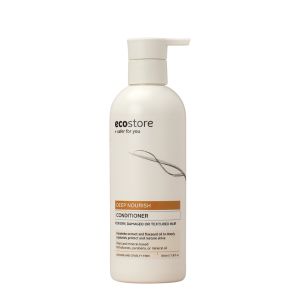Linum Usitatissimum (Linseed/Flaxseed) Seed Oil

Linum Usitatissimum (Linseed/Flaxseed) Seed Oil
Linum usitatissimum seed oil is an amber-coloured oil expressed from the seeds of the linseed/flax plant (Linum usitatissimum). We use this ingredient as an emollient in some of our hair care products, contributing to smooth and healthy hair.
Linum usitatissimum, not to be confused with New Zealand Harakeke Flax (Phormium tenax), is a flowering plant in the Linaceae family, and is one of the world's oldest cultivated crops. Plants grow to around a meter tall, with slender leaves, blue flowers and dry capsules containing brown or golden seeds. The seeds can be harvested, dried and used as a food or undergo a process of cold-pressing and/or solvent extraction to produce linseed oil. This edible oil is rich in alpha-Linolenic acid (ALA), an omega-3 fatty acid, and has many other uses including in some varnishes and paints. When used in hair care, this ingredient can help align hair fibres and contribute to anti frizz. Linseed also contains arginine, an amino acid that can help protect hair protein against heat damage.
A group of plant-derived fatty acid oils, including linseed oil, were assessed by the Cosmetic Ingredient Review (CIR) Expert Panel in 2017. They reviewed their safety for dermal exposure in cosmetics and concluded they are “safe in cosmetics in the present practices of use and concentration described in this safety assessment.”
Botanical name: Linum usitatissimum
Other names: Linseed Oil, Flaxseed Oil
Chemical class: Fats and Oils
Main constituents: Linolenic Acid, Linoleic Acid, Oleic Acid, Palmitic Acid, Stearic Acid
REFERENCES
Oshimura, E., & Ino, M. (2004). Effects of arginine on hair damage via oxidative coloring process. Journal of cosmetic science, 55 Suppl, S155–S170.
Shim, Youn & Gui, Bo & Arnison, Paul & Wang, Yong & Reaney, Martin. (2014). Flaxseed (Linum usitatissimum L.) bioactive compounds and peptide nomenclature: A review. Trends in Food Science & Technology. 38. 10.1016/j.tifs.2014.03.011.
Burnett, C. L., Fiume, M. M., Bergfeld, W. F., Belsito, D. V., Hill, R. A., Klaassen, C. D., Liebler, D., Marks, J. G., Jr, Shank, R. C., Slaga, T. J., Snyder, P. W., & Alan Andersen, F. (2017). Safety Assessment of Plant-Derived Fatty Acid Oils. International journal of toxicology, 36(3_suppl), 51S–129S. https://doi.org/10.1177/1091581817740569
Piva, G. S., Weschenfelder, T. A., Franceschi, E., Cansian, R. L., Paroul, N., & Steffens, C. (2018). Linseed (Linum usitatissimum) Oil Extraction Using Different Solvents. Food technology and biotechnology, 56(3), 366–372. https://doi.org/10.17113/ftb.56.03.18.5318
Temperate Plants Database, Ken Fern. temperate.theferns.info. 2022-03-02. temperate.theferns.info/viewtropical.php?id=Linum+usitatissimum



